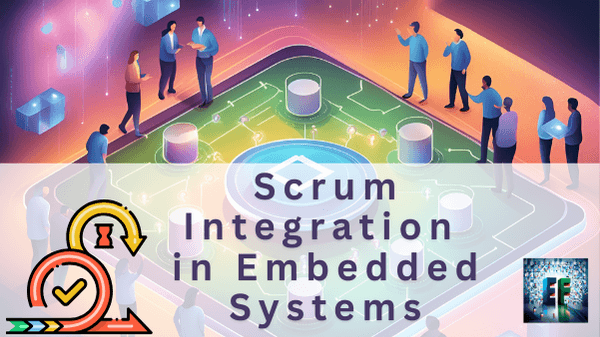Introduction
Embedded systems have become an integral part of various industries, including automotive, healthcare, aerospace, and consumer electronics. These systems, consisting of a combination of hardware and software, are designed to perform specific functions efficiently and reliably. Managing projects in the field of embedded systems requires a unique set of skills and considerations. In this comprehensive article, we will delve into the key factors that impact project management in embedded systems, discuss the challenges associated with it, and explore strategies for success.
Table of Contents
Key Factors in Project Management for Embedded Systems
1. Understanding System Complexity
Embedded systems are inherently complex, involving the integration of hardware and software components. Project managers must possess a deep understanding of both domains to ensure effective coordination and collaboration between the respective teams. This complexity amplifies when dealing with real-time operating systems, low-level hardware interfaces, and stringent performance requirements. A solid grasp of the intricate system architecture and underlying technologies is crucial for successful project management.
2. Cross-Disciplinary Collaboration
Embedded systems projects necessitate collaboration among various teams with diverse skill sets, including hardware engineers, software developers, and quality assurance specialists. Effective communication and coordination between these teams are critical to ensure seamless integration and functionality of the final product. Project managers must foster a collaborative environment, encourage knowledge sharing, and facilitate cross-disciplinary interactions to achieve project objectives efficiently.
3. Time and Cost Constraints
Like any other project, embedded systems projects face time and cost constraints. However, these constraints are often more stringent due to the high level of customization and integration involved. Project managers must carefully plan and allocate resources to meet project deadlines and budget limitations. Additionally, they need to account for potential delays caused by unforeseen technical challenges or changes in requirements.
4. Risk Management
Embedded systems projects carry inherent risks related to hardware compatibility issues, software bugs, and integration challenges. Project managers must proactively identify and mitigate these risks to prevent costly delays or failures. Robust testing and validation processes are crucial to ensure the reliability and safety of the embedded system. Additionally, establishing contingency plans and regularly monitoring project progress can help identify potential risks and address them promptly.
Tradeoffs and Challenges in Project Management for Embedded Systems
Performance vs. Cost
Embedded systems often require high-performance components, which can be expensive. Project managers need to strike a balance between meeting performance requirements and working within budget constraints. This may involve making tradeoffs and finding cost-effective solutions without compromising the quality and functionality of the system. Careful consideration of the system’s performance requirements, along with thorough research and evaluation of available components, can help optimize cost-effectiveness.
Flexibility vs. Time-to-Market
The embedded systems industry is characterized by rapid technological advancements and evolving customer demands. Project managers must balance the need for flexibility to accommodate changes and improvements with the pressure to deliver products within tight timeframes. Agile project management methodologies can help navigate this challenge by allowing iterative development and continuous adaptation. By breaking down the project into manageable increments and regularly reassessing priorities, project managers can strike a balance between flexibility and time-to-market.
Customization vs. Standardization
Embedded systems projects often involve a mix of custom-designed components and off-the-shelf modules. Project managers must decide when to leverage existing standardized solutions and when to invest in custom development. While customization can provide a competitive advantage and tailor the system to specific requirements, it may also increase project complexity and cost. Finding the right balance between customization and standardization is crucial to optimize project success. Thorough analysis of the project’s unique requirements, along with a cost-benefit analysis, can guide project managers in making informed decisions regarding customization and standardization.
Importance of Considering the Impact on Embedded Systems
Embedded systems play a critical role in various industries, and the success of projects in this field directly impacts the end-users and stakeholders. Poorly managed embedded systems projects can lead to product failures, safety issues, and financial losses. Therefore, it is essential to consider the impact of decisions made during project management.
For example, rushing the development process to meet aggressive deadlines may result in compromised quality and potential security vulnerabilities. Conversely, a well-planned project that prioritizes thorough testing and validation can lead to reliable and robust embedded systems, ensuring customer satisfaction and market success. Project managers must always keep in mind the end-users, their requirements, and the potential consequences of their decisions throughout the project lifecycle.
Conclusion
Project management in the embedded systems field is a multidimensional and challenging endeavor. Successful project management requires a comprehensive understanding of system complexity, effective cross-disciplinary collaboration, careful attention to time and cost constraints, and proactive risk management. Project managers must navigate tradeoffs between performance and cost, flexibility and time-to-market, and customization and standardization.
By considering the impact of decisions on the embedded system, project managers can ensure the delivery of high-quality, reliable, and cost-effective solutions. Ultimately, the success of embedded systems projects depends on the project manager’s ability to effectively plan, communicate, coordinate, and adapt to the dynamic nature of the field. With the right strategies, project managers can unlock the full potential of embedded systems and contribute to the advancement of various industries.






